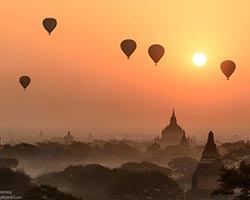Student Success: Student Success: Darin Hlavinka

1. When did you realize that photography was the field you wanted to pursue?
Although I've been interested in photography for a long time, it wasn't until four years ago, when I joined the Boise Camera Club, that I realized photography wasn’t just a passing hobby. Photography allows me to express my creativity unlike any other activity in my life.
2. When did you enroll at NYIP?
I first enrolled in the program because I had some extra time on my hands. Circumstances helped create a desire to change. I enjoyed working in the forestry industry, but I needed something else. I enrolled at Boise State University (BSU) in computer services technology. And I also had an interest in photography, hoping to one day become a professional photographer. NYIP helped me explore those options. When I completed the program in 1999 I had a good picture of the photography industry and how I might fit into that field.
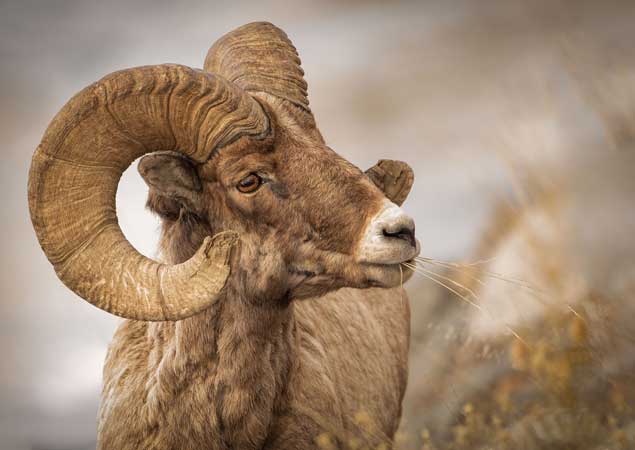
3. What was the coursework like?
Like most programs, there was reading to do, assignments to complete and submit, and feedback from the instructors. But the technology of learning has changed so much. Back then I would complete the assignment, have the film developed, print the images, send in the prints, then wait for the mentor’s feedback. They would send their feedback on cassette tapes. I wonder if today’s students even remember what cassette tapes are.
4. Was your mentor helpful during the process?
I worked regularly with Donald Sheff and Charles Delaney. They were great instructors and mentors. Their feedback and critique of my images helped me improve my technique and composition. Sometimes the feedback was pretty brutal, but I found that helpful. It was clear they weren’t just flattering me, but that they wanted me to grow as a photographer. I appreciated their insight, expertise, and their thoughts on new ways to approach a project.
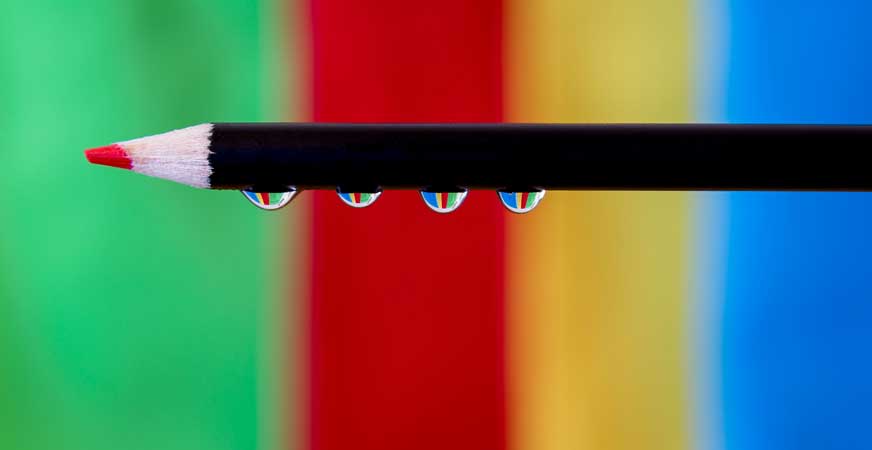
5. What type of work are you doing now?
My work life is filled with office equipment sales, repair and maintenance. It’s not as creative an outlet as photography, but I do enjoy meeting the needs of my clients and helping them solve problems. I also like the flexibility of my schedule because that allows me more time for photography.
6. Tell us about the Playing Outdoors photo contest you won.
Each year the Idaho Statesman sponsors a photography contest in association with a local camera store. This year’s contest was focused on scenery, wildlife and recreation taken by Idaho residents and taken in Idaho - the Gem State. This year’s winners include photographers of all ages. I submitted images that I thought captured the essence and personality of Idaho. Our state has so much beautiful scenery and photogenic landscape. It’s pretty easy to find great places to shoot - but not always easy to get the great shot.
My image, Sunset on the Marsh at Stanley Lake, is one of the iconic settings in Idaho. I love the colors of the scene with all the smokey hues and tones. This image was my first attempt at a five shot panorama. And it turned out pretty successful since it received First Place.
My second image, Waterfall on the trail to Trail Creek Lake received Honorable Mention. The slow shutter speed I used allowed the cascading water to blur, capturing the soft motion of the waterfall.
My last image, Early Morning near Stanley Lake, also received Honorable Mention. I think this image works because the smoke in the air helps to obscure the mountains in the background, but not completely hide them. Stanley Lake is one of my favorite places to shoot.
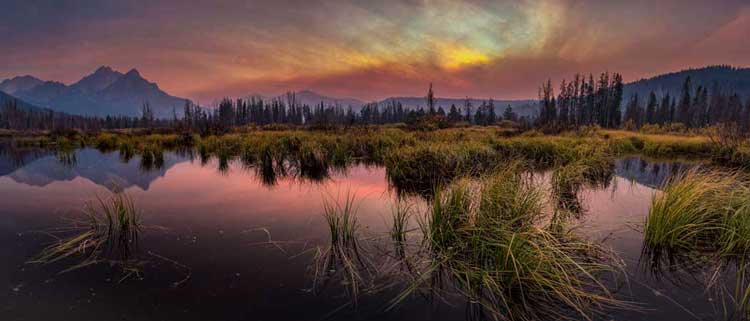
7. What qualities do you think a successful, aspiring photographer needs?
To be successful as a photographer, you first have to have a passion for photography. It has to be something you need to do, not just something you do now and then. Successful photographers also need a willingness to learn, to try new techniques so that their skills are always improving and their expertise always growing. Lastly, successful photographers must be willing to take risks. They have to submit to contest and galleries, be willing to show and share their work. They’ll receive positive feedback and criticism, but both are important for growth.
8. After graduation, what were your plans? How have those plans changed?
When I started the program I had every intention of being a professional photographer. But life happens and I’m glad photography is a hobby for me and not my job. I enjoy including photography in my life as an important activity.
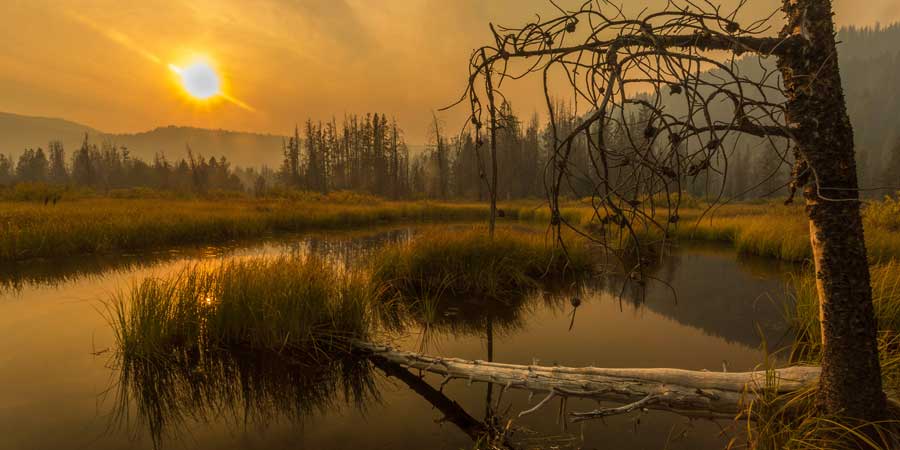
9. What do you always carry in your camera bag?
I always have my camera and lens - of course. And I also carry extra batteries and cards for those long days of shooting. I always carry a circular polarizer to help with skies and reflections, and a neutral density filter. I usually carry some sort of macro capability, either a macro lens or extension tubes. And I never leave home without some protein bars. Long days of photography require lots of energy.
10. What’s the most interesting thing you learned at NYIP?
At NYIP I learned new composition and lighting techniques that I’m still using today.
11. If you had to pick one, what was the most memorable photography project you’ve ever completed?
I worked as a volunteer for Kids in Motion, for Molina Healthcare and the Boys and Girls Clubs of Ada County. I was responsible for recording the day’s activities, capturing the excitement and joy in the faces of the people. The photos, which turned out so well, were used on the corporate website.
12. Describe a day in your life as a photographer!
Photography days start really early, well before sunrise because I want to be on location before the sun comes up. When the light is just right, I start shooting and moving and shooting more: find a setting I like, set up, compose the shot, take multiple frames, check what I have, take some more, then move to the next spot and repeat the process.
Inevitably I’m enduring cold temps or wet conditions, or both like in the marsh at Stanley Lake. While I’m shooting, I’m also looking for possible locations for sunset. Throughout the day I look for opportunities; I constantly watch and follow the light.
13. What’s the most rewarding part of studying photography?
The most rewarding is seeing the end result. When an image comes together, from vision to shooting to processing to printing - that final product offers so much creative satisfaction.
14. What subject is usually your favorite to shoot?
I like shooting landscapes, at sunrise and sunset during the golden hours. And anytime the opportunity to shoot wildlife (photographically speaking) arises I’ll jump on the chance to be part of that moment.
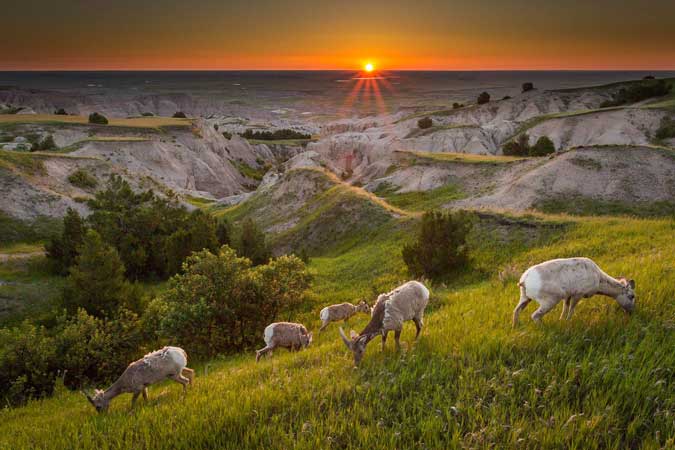
15. If you could give one piece of advice to our current and prospective students, what would it be?
Shoot a lot, but be willing to take a break and have a life outside of photography. And if you want to be recognized by more than just your friends and family, create a social media network to help get your name out there and make yourself more visible.
Want to learn more? NYIP offers accredited photography classes that can help you learn photography or start a new career. Request your free course catalog

